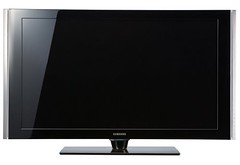I thought I embraced the future of television several years ago when we got our first TiVo. While that event was significant, it’s now clear our DVR was only a technological painkiller to make tolerable the broken state of television: scheduled screenings with heavy commercial interruption. But things have come a long way since then.
To demonstrate how far and fast television has come, I turn to my own household. We’re a good example because we’re neither manic early adopters, nor laggards — we’re somewhere in the middle. We experienced extraordinary change over the past year, and it happened with only modest investment and simple upgrades.
- Our television now is high-definition, 52 inches widescreen, with digital surround sound.
- Verizon’s FioS fiber-optic lines have replaced traditional coaxial cable lines into our home, and they connect to a high-definition cable-television receiver.
- Those fiber-optic lines enable much faster Internet connection speeds, making broadband video more meaningful than ever before.
- Sources of online video are getting serious, and high-definition video quality is becoming more prevalent. There’s BitTorrent, of course, but also more legal and mainstream sources, including Netflix, Amazon and Hulu.
- Our television system plugs into our cable box, but also a dedicated laptop (with Blu-ray DVD) and several other devices. One awesome device is a Roku, a digital video player that instantly streams high quality movies and network television series from Netflix (and soon from Amazon Video On Demand).
- With a dedicated laptop for our television system, services like Boxee make online video social and optimized for widescreen. This helps us discover the best content, display it properly and filter things we don’t want.
Indeed, these technologies prompted significant behavioral shifts and media configuration choices. Here are the big ones in our household:
Firing The Cable Company Becomes A Sport
It used to be that the traditional cable company was the only television content and Internet pipeline into our home. But now there’s a better choice, and it’s creating downward pressure on prices, and upward pressure on product selection, quality and service. While a duopoly is not ideal, it’s much better than a monopoly. And I certainly enjoyed firing our traditional cable company. So did our neighbors.
Decline Of Casual, Commercial-Interrupted Viewing
Casual, commercial-interrupted television viewing is almost gone, unless it’s a quick clip on a laptop. There are several reasons: First, today’s steroid-injected media systems don’t lend themselves to casual viewing. Richer programming, huge vivid pictures and surround sound means that our television room has turned into a theater. Therefore, it becomes difficult to do anything but focus fully on the programming. Similarly, commercial interruptions become more intense and difficult to ignore, which means they become more bothersome.
Second, the paradox of technology is that television systems have gotten overly complex. With numerous devices, configurations and programming sources, it takes more planning, commitment and work to view. That complexity has led my family to be more selective and gravitate toward more meaningful programming with higher expectations and focus.Â
One Theater Versus Multiple TVs
In our house, we’ve never had more than one or two televisions. But as televisions evolve into mini theaters, the complexity and cost inherent in a good system makes it impractical to have multiple television configurations. Certainly, there will be more video screens, evident on mobile devices and laptops, used primarily for short-form viewing. But for long-form television viewing, we certainly don’t want to downgrade from a theater experience to a lighter, less-satisfying one. Switching back and forth is unpleasant.
Thirst For High-Definition Content Growing
Once you get used to high-definition video, anything less is painful to endure. As a result, we sometimes select programming we’d otherwise disregard — because it was high-def and the alternative wasn’t. We long for the day when all programming will meet a minimum threshold of high-def.
Dumping The Cable Box
Most significant, we’re almost ready to dump the cable box, which delivers traditional broadcast channels and network programming. The combination of better broadband, plug-and-play devices (like Roku) and serious online video streaming has made a big dent in our traditional cable-box viewing. Sports and other live events are still tied to cable boxes, and therefore will remain among the few significant incentives to keep traditional cable programming over the next couple years. But I underscore that the only time my family really used our cable box in 2009 was to tune into the Super Bowl. In one year, when our FioS subscriber agreement ends, we plan to cancel cable programming, unless it’s a bundled giveaway.
To be sure, television and video content will continue to evolve quickly. Our personal media habits and technology configurations, described above, will outdate quickly. What will be the new television experience? I’m not sure, but I anticipate it will keep getting better. And I hope it simplifies.
How is television changing for you?
(The above also was my latest column in MediaPost.)


![Reblog this post [with Zemanta]](http://img.zemanta.com/reblog_c.png?x-id=677d5e88-1c28-4d23-b53b-7c1fb1e2d445)
Nice article, Max. Sounds like you have a nice setup. Next fall, when my alma mater takes the field, Notre Dame — your doorbell may ring and you'll answer it to find me and a 12 pack of your favorite beer — ice cold.
Nice article, Max. Sounds like you have a nice setup. Next fall, when my alma mater takes the field, Notre Dame — your doorbell may ring and you'll answer it to find me and a 12 pack of your favorite beer — ice cold.